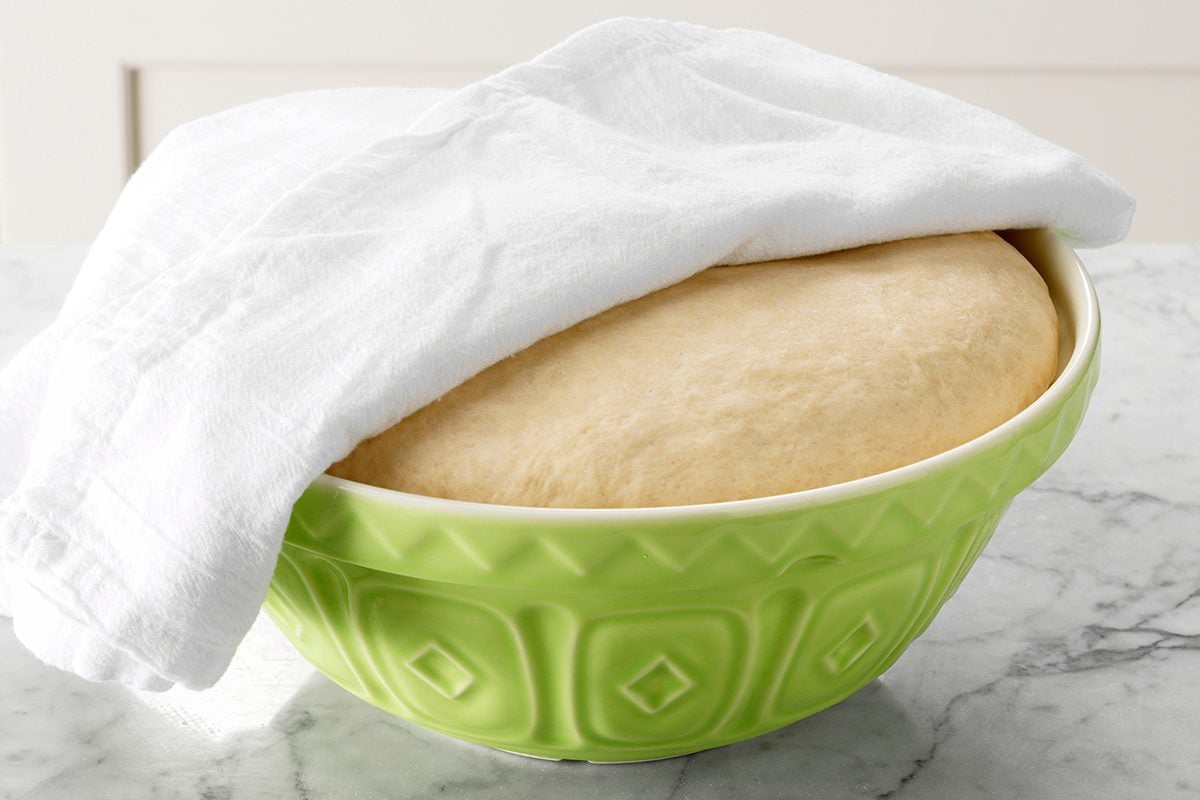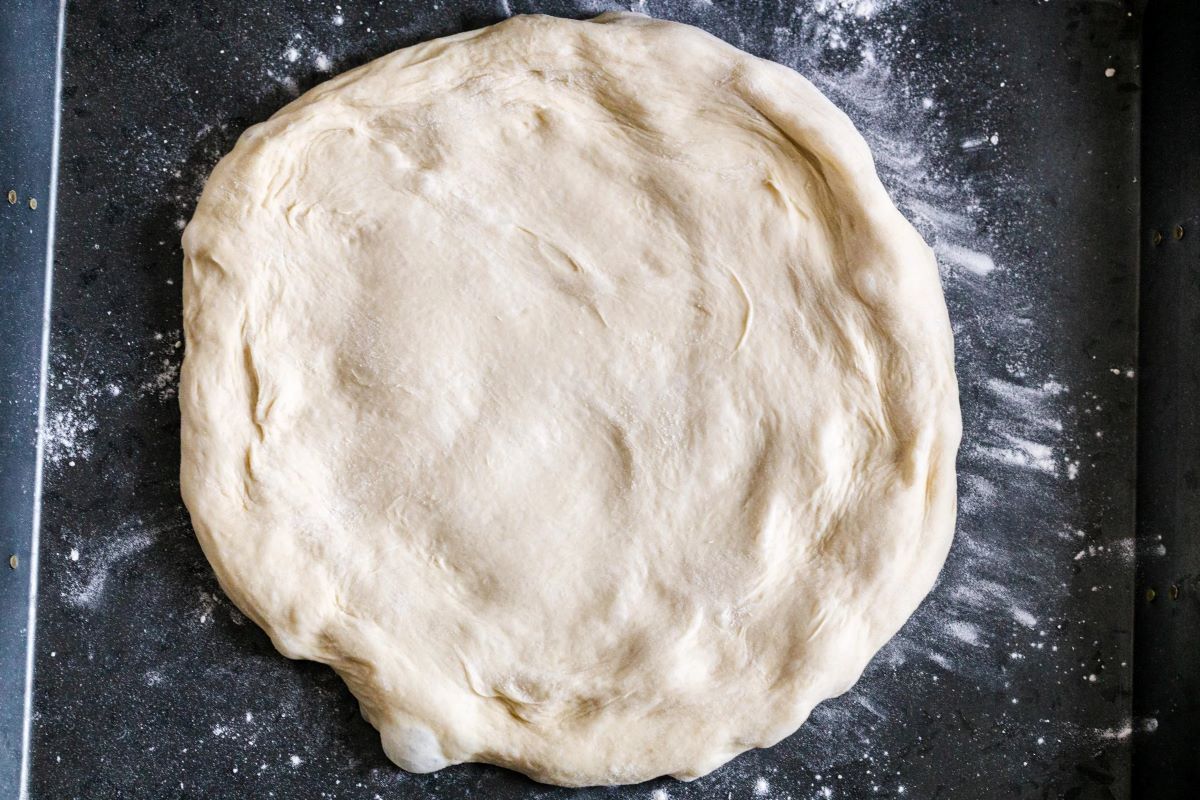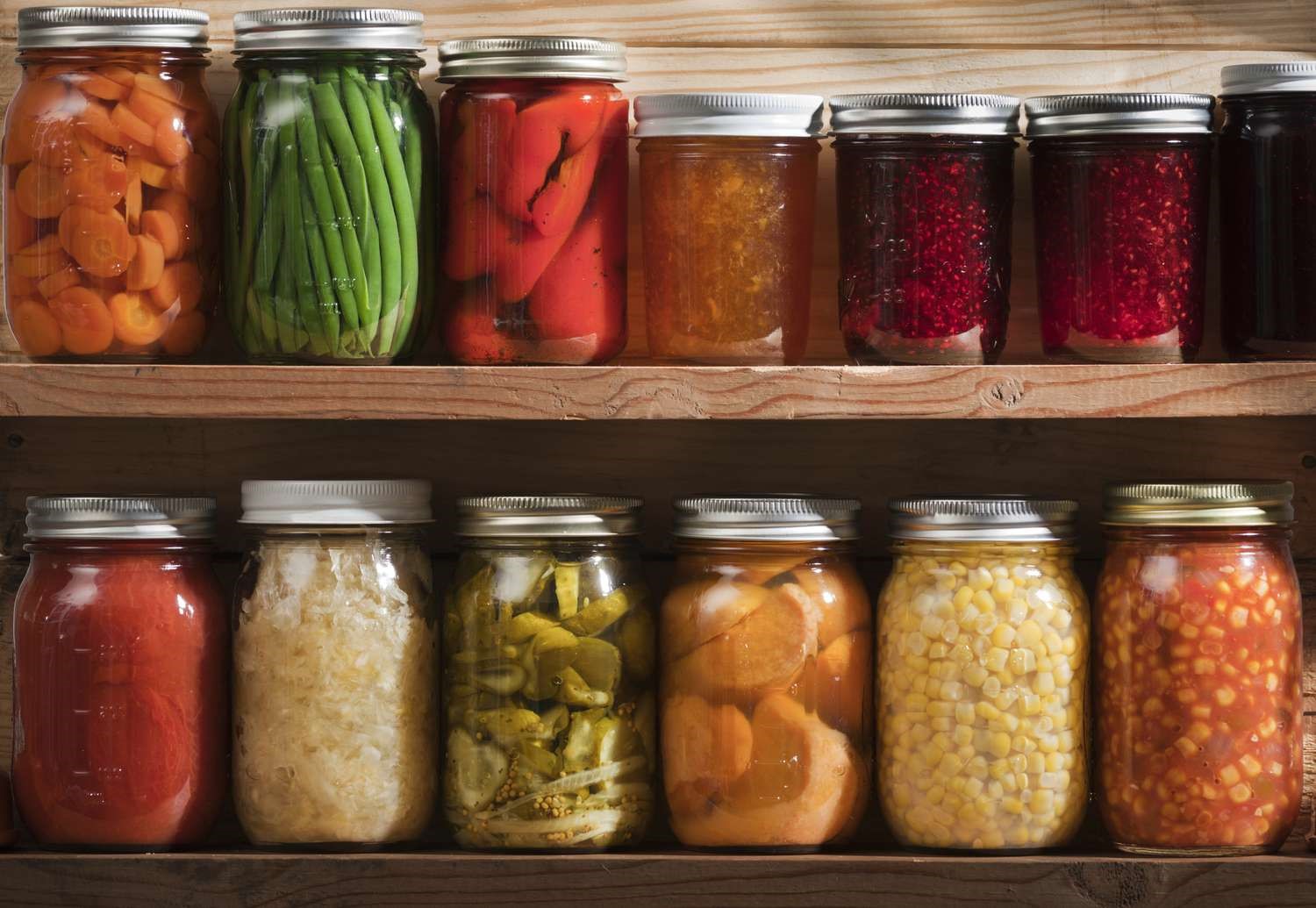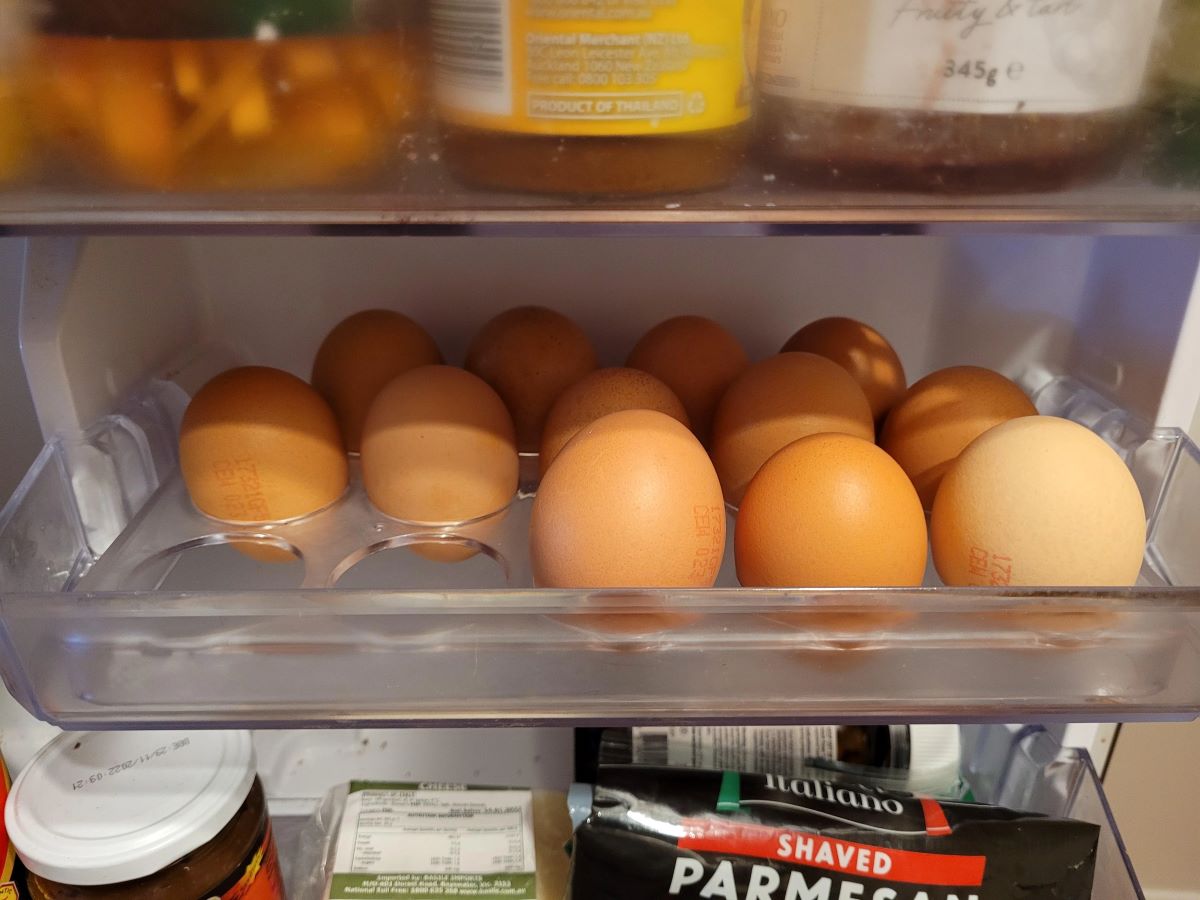

Articles
How To Store Dough Overnight Without Fridge
Modified: August 17, 2024
Learn how to store dough overnight without a fridge in this informative articles. Keep your dough fresh and ready for baking.
(Many of the links in this article redirect to a specific reviewed product. Your purchase of these products through affiliate links helps to generate commission for Storables.com, at no extra cost. Learn more)
Introduction
Properly storing dough overnight is essential for achieving the best results in your baking endeavors. Whether you’re making bread, pizza dough, or pastry dough, giving it enough time to rest and develop flavor is crucial. However, not everyone has access to a refrigerator to store their dough overnight. The good news is that there are alternative methods you can use to store your dough without a fridge and still produce fantastic results.
In this article, we will explore various techniques for storing dough overnight without a fridge. We’ll discuss the importance of proper dough storage, alternative methods you can utilize, and share some valuable tips to help you make the most out of your overnight dough storage. So, let’s dive in and discover how to store your dough effectively, even without a refrigerator.
Key Takeaways:
- Proper dough storage is crucial for optimal flavor and texture development. Alternative methods like using a cool, dark place or a bread box can create suitable environments for fermentation without a fridge.
- Monitoring temperature, humidity, and air exposure is key for successful overnight dough storage. Experiment, learn, and adapt to find the best method for your specific dough recipes and climate.
Read more: How To Store Dough In Fridge
Understanding the Importance of Storing Dough Properly
Before we delve into the different methods of storing dough without a fridge, it’s important to understand why it’s crucial to store dough properly in the first place. Proper dough storage allows the gluten to relax, enzymes to break down starches, and flavors to develop more fully. This process, known as fermentation, creates a more flavorful and tender final product.
When dough is left to rest and ferment at the right temperature, it undergoes a series of chemical reactions. The yeast in the dough feeds on sugars, producing carbon dioxide gas, which creates the lovely air pockets in bread. Furthermore, the enzymes in the dough slowly break down complex carbohydrates into simpler sugars, enhancing the flavor and texture of the finished product.
However, if dough is not stored properly, these processes can be hindered, resulting in less-than-optimal results. If exposed to extremes in temperature, such as leaving dough in a warm room or outdoors, the yeast can become overactive, leading to dough that rises too quickly and may develop off-flavors. On the other hand, if the dough is stored in a too-cold environment, the yeast activity slows down, hindering proper fermentation and flavor development.
Furthermore, keeping dough at the wrong humidity level can also affect its quality. If the dough dries out, it can form a dry, tough crust on the outside, making it difficult for the dough to rise properly. Conversely, if the dough is too moist, it may become sticky and difficult to work with.
By understanding the importance of proper dough storage, you can ensure that your dough develops the best flavor and texture possible. Now let’s explore some alternative methods for storing dough overnight without a fridge.
Alternative Methods for Storing Dough Overnight
If you don’t have access to a refrigerator or if you simply want to explore alternative methods for storing your dough overnight, there are several options available to you. Let’s take a look at some of these methods:
- Using a Cool, Dark Place: One of the simplest and most accessible methods is to store your dough in a cool, dark place in your kitchen. This could be a pantry, cupboard, or even a basement. Choose a spot where the temperature remains relatively consistent and doesn’t experience extreme fluctuations. To protect the dough from drying out, cover it tightly with plastic wrap or place it in a covered bowl.
- Utilizing a Bread Box: If you have a bread box, you can utilize it for overnight dough storage. Bread boxes are designed to maintain a slightly cooler and more humid environment, which can be beneficial for dough fermentation. Place your dough in a covered container or wrap it in plastic wrap to protect it from air exposure and place it in the bread box.
- Utilizing a Dough Proofer: If you’re a serious bread baker, investing in a dough proofer can be a game-changer. A dough proofer is a special appliance that provides precise temperature and humidity control, creating the ideal conditions for yeast fermentation. Simply place your dough inside the proofer, set the desired temperature, and let it work its magic overnight.
- Using a Cooler or Insulated Bag: If you have a cooler or an insulated bag, you can create a makeshift proofing environment for storing your dough. Place your covered dough container inside the cooler or bag, along with a warm water bottle or a microwaved heat pack to maintain a slightly warmer temperature. This method helps to create a stable environment for fermentation.
These alternative methods provide viable options for storing your dough overnight without the need for a refrigerator. Experiment with different methods to find what works best for your specific dough recipe and climate. However, keep in mind that these methods may not offer the same level of temperature control and consistency as a refrigerator or dough proofer.
Now that you’re aware of alternative methods for storing dough overnight, let’s explore some tips to help you achieve successful results.
Method 1: Using a Cool, Dark Place
One of the simplest and most accessible methods for storing dough overnight without a fridge is to utilize a cool, dark place in your kitchen. This method involves finding a spot where the temperature remains relatively cool and consistent, away from direct sunlight or heat sources.
Here’s how you can use this method to store your dough:
- Prepare your dough according to your recipe instructions.
- Once the dough has been shaped or kneaded, place it in a clean and covered bowl or container.
- Ensure that the container is airtight or tightly covered with plastic wrap to prevent drying out.
- Find a cool spot in your kitchen, such as a pantry or cupboard. Make sure the location is away from any drafts or heat sources.
- Place the covered container with the dough in the cool, dark spot. This will provide a suitable environment for fermentation.
- Allow the dough to rest and ferment overnight.
It’s important to note that the temperature in your chosen spot should not be too cold or too warm. The ideal range for most dough is between 70-75°F (21-24°C). Cooler temperatures may slow down fermentation, resulting in less flavor development, while warmer temperatures can cause the dough to rise too quickly.
While using a cool, dark place for overnight dough storage is a straightforward method, it may not offer the same level of temperature control and consistency as a refrigerator. Therefore, it’s essential to monitor the dough and adjust the fermentation time accordingly.
Now that you’re familiar with the first method, let’s move on to exploring another alternative method for storing dough without a fridge.
Method 2: Utilizing a Bread Box
If you have a bread box, you can take advantage of its design to store your dough overnight. Bread boxes are specifically designed to maintain a slightly cooler and more humid environment, which can be beneficial for dough fermentation.
Here’s how you can use a bread box to store your dough:
- Prepare your dough as instructed in your recipe.
- Once the dough has been shaped or kneaded, place it in a clean and covered container. You can use a bowl or a plastic bag.
- Ensure that the container is airtight or tightly sealed to prevent air and moisture from getting in or out.
- Place the covered container with the dough inside the bread box.
- Close the bread box securely to create a controlled environment.
- Leave the dough overnight in the bread box to rest and ferment.
The bread box provides a more consistent and slightly cooler environment than your kitchen counter or pantry, which can help promote optimal fermentation. The slightly higher humidity level inside the bread box can also prevent the dough from drying out during the resting period.
If you don’t have a bread box, you can achieve a similar effect by using a large plastic container with a lid. Just make sure there is enough space for the dough to rise without touching the lid.
Remember to monitor the dough to ensure it is fermenting properly and adjust the fermentation time based on the temperature and humidity inside the bread box. Each dough recipe may have specific requirements, so it’s always a good idea to refer to your recipe instructions as a guide.
Now that you’ve learned about utilizing a bread box for overnight dough storage, let’s continue exploring more methods to store dough without a fridge.
You can store dough overnight without a fridge by wrapping it tightly in plastic wrap and placing it in a cool, dark place. This will slow down the fermentation process and keep the dough from over-proofing.
Read more: How To Store Bread Dough In Fridge
Method 3: Utilizing a Dough Proofer
If you’re an avid bread baker or someone who enjoys making dough regularly, investing in a dough proofer can greatly enhance your baking experience. A dough proofer is a specialized appliance that provides precise temperature and humidity control, creating the perfect conditions for yeast fermentation.
Here’s how you can utilize a dough proofer to store your dough overnight:
- Prepare your dough according to your recipe instructions.
- Once the dough has been shaped or kneaded, place it in a covered container, such as a bowl or a plastic bag.
- Set the temperature and humidity settings on your dough proofer according to the requirements of your dough recipe.
- Place the covered container with the dough inside the dough proofer.
- Close the proofer and allow the dough to rest and ferment overnight.
A dough proofer ensures consistent temperature and humidity levels, allowing for optimal yeast activity and fermentation. This precise control helps develop flavor and texture in your dough, resulting in excellent baking results.
While a dough proofer provides excellent control, it may not be a practical option for everyone due to its specialized nature and cost. However, if you are passionate about bread baking or frequently work with different types of dough, investing in a dough proofer can be a worthwhile addition to your kitchen arsenal.
Now that you’ve learned about utilizing a dough proofer, let’s move on to exploring another method for storing dough overnight without a fridge.
Method 4: Using a Cooler or Insulated Bag
If you don’t have access to a fridge or a dough proofer, you can create a makeshift proofing environment for storing your dough by using a cooler or an insulated bag. This method allows you to control the temperature and create a stable environment for fermentation.
Here’s how you can use a cooler or insulated bag to store your dough overnight:
- Prepare your dough according to your recipe instructions.
- Once the dough has been shaped or kneaded, place it in a covered container, such as a bowl or a plastic bag.
- Fill a heat-resistant bottle with warm water or microwave a heat pack, making sure it’s not too hot to handle.
- Place the warm water bottle or heat pack inside the cooler or insulated bag.
- Put the covered container with the dough next to the warm water bottle or heat pack.
- Close the lid or seal the insulated bag tightly to maintain the warmth and create a stable environment.
- Leave the dough inside the cooler or insulated bag overnight to rest and ferment.
The warm water bottle or heat pack provides a gentle source of heat, helping to maintain a slightly warmer temperature inside the cooler or insulated bag. This controlled warmth aids in yeast activity and promotes proper fermentation of the dough.
It’s important to note that you should monitor the temperature inside the cooler or bag to ensure it doesn’t become too hot. You want to maintain a temperature range of 70-75°F (21-24°C) for most dough recipes.
Additionally, make sure the container with the dough is not in direct contact with the warm water bottle or heat pack, as excessive heat can cause the dough to rise too quickly.
Using a cooler or insulated bag as a dough storage solution provides an accessible and affordable option for maintaining a stable proofing environment without a fridge.
Now that you’re familiar with using a cooler or insulated bag, let’s move on to some tips for successful overnight dough storage.
Tips for Successful Overnight Dough Storage
Properly storing your dough overnight, whether in a cool, dark place or utilizing alternative methods, requires some attention to detail. Here are some tips to help you achieve successful results:
- Temperature Control: Pay close attention to the temperature of your storage area or the environment created by alternative methods. Ensure that it falls within the recommended range for your specific dough recipe. Too warm or too cool temperatures can affect fermentation and result in subpar dough.
- Humidity Control: While some methods naturally maintain humidity, others may require additional measures. For dough that requires higher humidity, you can place a small dish of water in the storage area or use a moist cloth to cover the dough container. Conversely, if the environment is excessively humid, you can place a folded paper towel or a small piece of cloth to absorb excess moisture.
- Timing and Observation: It’s essential to monitor the dough during the fermentation process. Depending on the temperature and other factors, the dough may ferment faster or slower than expected. Check the dough periodically to ensure proper expansion and rising. Adjust the timing or temperature if necessary.
- Protection from Air Exposure: To prevent the dough from drying out, cover it tightly with plastic wrap, place it in a sealed container, or use a dough rising bucket with a lid. This ensures that the dough retains its moisture and doesn’t form a dry crust on the surface.
- Labeling: If you’re storing multiple dough batches or different types of dough, it’s helpful to label containers to avoid confusion. Include the date, type of dough, and any specific instructions or timing notes.
- Experiment and Learn: Every dough recipe and storage method may have its unique requirements. Use these tips as guidelines, but also don’t be afraid to experiment and learn from your own experiences. Take note of what works best for you and adapt accordingly.
By following these tips, you can ensure that your dough is stored properly overnight, allowing for optimal fermentation and flavor development. Remember, the goal is to provide the ideal environment for your dough to rise and develop its best characteristics.
Now that you have a good understanding of effective overnight dough storage techniques and tips, you can confidently experiment and explore different methods to suit your specific baking needs. Happy baking!
Conclusion
Properly storing dough overnight is vital for achieving the best results in your baking endeavors. While a refrigerator is the conventional method for dough storage, there are alternative options available if you don’t have access to one. By utilizing a cool, dark place, a bread box, a dough proofer, or a cooler/insulated bag, you can create suitable environments for dough fermentation.
Understanding the importance of proper dough storage is essential to ensure optimal flavor and texture development. By providing the right temperature, humidity, and protection from air exposure, you can create the ideal conditions for the yeast to work its magic. The fermentation process allows the dough to relax, develop complex flavors, and form a light and airy structure.
Experimenting with different methods and techniques will help you discover the most effective approach for your specific dough recipes and climate. Keep in mind that temperature and timing play significant roles in the success of your overnight dough storage. Monitoring and adjusting these factors accordingly will help you achieve the best results.
Remember to label your dough containers, maintain proper air and moisture control, and have patience as you observe the dough’s progress. Each dough and recipe may have its own requirements, so it’s essential to be adaptable and learn from your experiences.
With the knowledge gained from this article, you are now equipped to store your dough overnight without a fridge using a variety of alternative methods. So go ahead, get creative, and enjoy the process of creating delicious baked goods with well-rested and properly stored dough.
Happy baking!
So, you've mastered storing dough overnight without a fridge, but what if you're keen to tackle bread-making with minimal equipment? Our next guide breaks down how to make bread without a mixer, simplifying the process and ensuring anyone can create delicious homemade bread with ease. Don't miss out on this straightforward, hands-on approach to bread making that guarantees a delightful baking experience every time.
Frequently Asked Questions about How To Store Dough Overnight Without Fridge
Was this page helpful?
At Storables.com, we guarantee accurate and reliable information. Our content, validated by Expert Board Contributors, is crafted following stringent Editorial Policies. We're committed to providing you with well-researched, expert-backed insights for all your informational needs.















0 thoughts on “How To Store Dough Overnight Without Fridge”